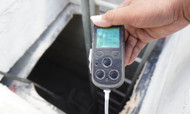3 Common Gas Detection Mistakes You Need To Avoid
Posted by William Kimmell on 27th Sep 2021
If your workplace requires gas detection tools, obtaining such tools is crucial. However, monitoring health hazards in the air requires more than buying gas detection tools. The list below details several of the most common gas detection mistakes you need to avoid. Familiarize yourself with these slip-ups to ensure your workplace remains responsible.
Not Providing Detector Training
Gas detectors aren’t incredibly challenging devices to use, but nevertheless, workers must be trained on how to use them. If they don’t have the proper training, employees can make dire miscalculations in the field. After all, the point of gas detectors is to help employees prepare themselves for potential airborne health hazards. Each training session must be equally efficient and meaningful.
For instance, you can deliver vital information using PowerPoint presentations. That said, training should involve a hands-on portion, which gives employees a chance to test their knowledge before officially becoming a part of your workflow. As a result, you can spot novice slip-ups and correct them instantly, which is ideal compared to having those mistakes occur during daily operations.
Neglecting Routine Maintenance
Gas detector training should involve showing your team how to read and use every function of the tool. It should also include a maintenance portion. Neglecting routine maintenance might not seem problematic to novices, but gas detectors require upkeep to perform functions correctly. Luckily, this is not only one of the most common gas detection mistakes you need to avoid but also one of the easiest.
The right maintenance program requires understanding when the devices need upkeep, how employees must perform the upkeep, and how to monitor employees to ensure maintenance occurs when necessary. Routine maintenance such as bump tests and calibration are simple to carry out and help employees determine whether they’re using an accurate, reliable detector.
Skipping the Risk Assessment
You must perform a risk assessment of the designated workspace before you buy the gas detector. This’ll help you determine which gases are present so you can plan accordingly. Additionally, assessing oxygen levels is vital—too much or too little creates a dangerous atmosphere. Risk assessment will help you avoid buying the wrong gas detectors.
You can easily buy gas detectors online. Each device offers its own set of capabilities. While some detectors can monitor the air for many gases, others can only detect one. Although both options are suitable, their usefulness comes down to the application. So, to make the most out of your detectors, make sure you know what you’re detecting.

